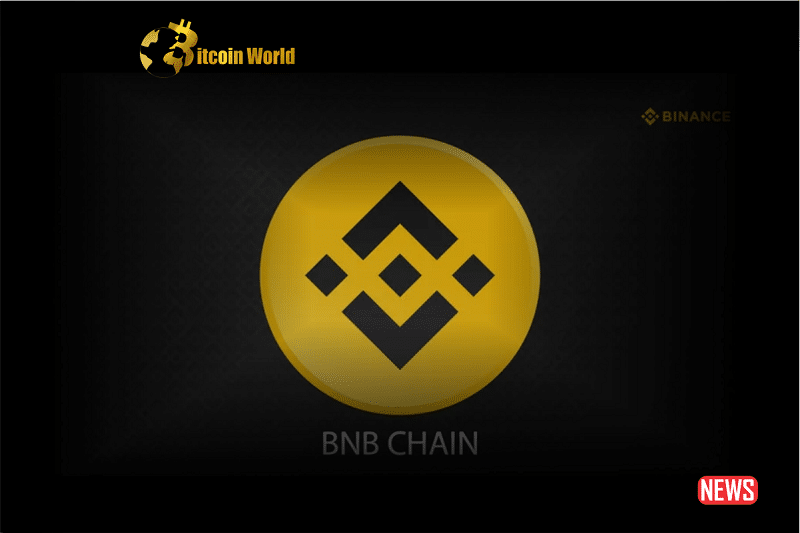Ever felt like blockchain transactions could be a bit… slow? And those fees? Ouch! If you’re part of the thriving BNB Chain community, you’re in luck. Binance has just unveiled opBNB, a brand-new layer-2 solution built to supercharge the BNB Chain experience. Think of it as a high-speed side road built to alleviate traffic on a busy highway. Let’s dive into what makes opBNB tick and why it’s a game-changer.
What Exactly is opBNB and Why Should You Care?
Imagine a smoother, faster, and more affordable way to interact with the BNB Chain. That’s the promise of opBNB. Born from the collaboration between Binance and the powerful Optimism OP Stack, opBNB is designed to tackle the ever-present challenge of scalability. In simple terms, it aims to handle a much larger volume of transactions without the network getting bogged down or those pesky gas fees skyrocketing.
The Need for Speed (and Lower Fees!): Understanding opBNB’s Mission
BNB Chain, while a major player in the blockchain space, isn’t immune to the scalability challenges faced by many networks. When demand surges, things can get congested and expensive. opBNB steps in to address this head-on. Here’s the breakdown:
- Boosting Transaction Throughput: opBNB is designed to handle over 4,000 transfer transactions per second. That’s a significant leap, meaning faster processing times for everyone.
- Slashed Transaction Costs: Tired of hefty gas fees? opBNB is targeting average transaction costs below $0.005. Yes, you read that right! This opens up a whole new world of possibilities for micro-transactions and high-volume applications.
- Ethereum Compatibility: Good news for developers! opBNB is built to be compatible with the Ethereum Virtual Machine (EVM). This means existing Ethereum-based smart contracts and tokens (like ERC-20) can seamlessly integrate with opBNB.
How Does opBNB Actually Work? Enter Optimistic Rollups
So, how does opBNB achieve this impressive feat? The secret lies in its use of optimistic rollups, a clever scaling technology championed by the Optimism framework. Think of it this way:
- Transactions are processed off the main BNB Chain (the “root chain”) on the opBNB layer-2.
- These transactions are then “rolled up” into batches and posted back to the main chain.
- The system optimistically assumes these batched transactions are valid.
- There’s a challenge period where anyone can dispute a transaction if they believe it’s fraudulent. If no one challenges within the timeframe, the transactions are confirmed on the main chain.
This “optimistic” approach significantly reduces the load on the main chain, leading to faster and cheaper transactions on opBNB.
Developer-Friendly Design: Making Integration a Breeze
For developers looking to build on opBNB, the integration process is designed to be smooth. opBNB provides a user-friendly RPC service layer. This essentially simplifies the connection process, allowing developers to focus on what they do best: building amazing decentralized applications (dApps) without getting bogged down in the complexities of layer-2 scaling.
Is Everyone on Board? The Reaction So Far
While the launch of opBNB has generated excitement, it hasn’t been without its share of discussion and debate. Some industry experts have voiced their perspectives on BNB Chain’s approach. For example, Adam Cochran from Cinneamhain Ventures raised questions about potential scalability limitations due to BNB Chain being a centralized fork of Ethereum. He suggested alternative strategies like joining Optimism as a “superchain” or building directly as a layer-2 on Ethereum.
Where Does BNB Chain Stand Now? A Quick Look at the Numbers
Despite the ongoing discussions, BNB Chain remains a significant player in the DeFi landscape. According to DeFiLlama, it currently holds the third-largest total value locked (TVL), trailing only Ethereum and Tron. Here’s a snapshot:
| Metric | Value |
|---|---|
| DeFi Total Value Locked (TVL) | $3.38 Billion |
| 24-Hour Trading Volume | $264 Million |
| Approximate Daily Active Users | 1 Million |
These numbers highlight the continued activity and importance of the BNB Chain ecosystem.
opBNB: A Step Towards a Scalable Future?
The introduction of opBNB is undoubtedly a significant move by BNB Chain to address its scalability challenges. By leveraging the robust Optimism OP Stack and ensuring compatibility with the vast Ethereum ecosystem, opBNB has the potential to significantly enhance transaction speeds and drive down costs. This could pave the way for wider adoption of blockchain technology and provide a more seamless experience for users interacting with decentralized applications on the BNB Chain.
What’s Next for opBNB?
Keep an eye on the development and adoption of opBNB. As it moves beyond the testnet phase, its real-world performance and impact on the BNB Chain ecosystem will be closely watched. Will it live up to its promise of faster and cheaper transactions? Only time will tell, but the initial signs are certainly promising. For users and developers alike, opBNB represents a significant step forward in the evolution of the BNB Chain.
Disclaimer: The information provided is not trading advice, Bitcoinworld.co.in holds no liability for any investments made based on the information provided on this page. We strongly recommend independent research and/or consultation with a qualified professional before making any investment decisions.


